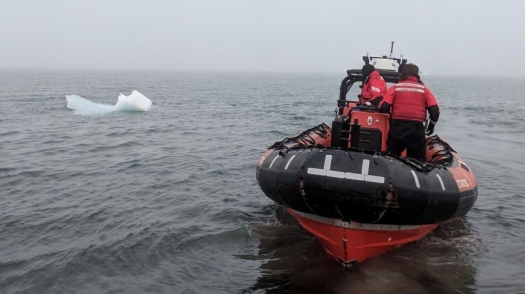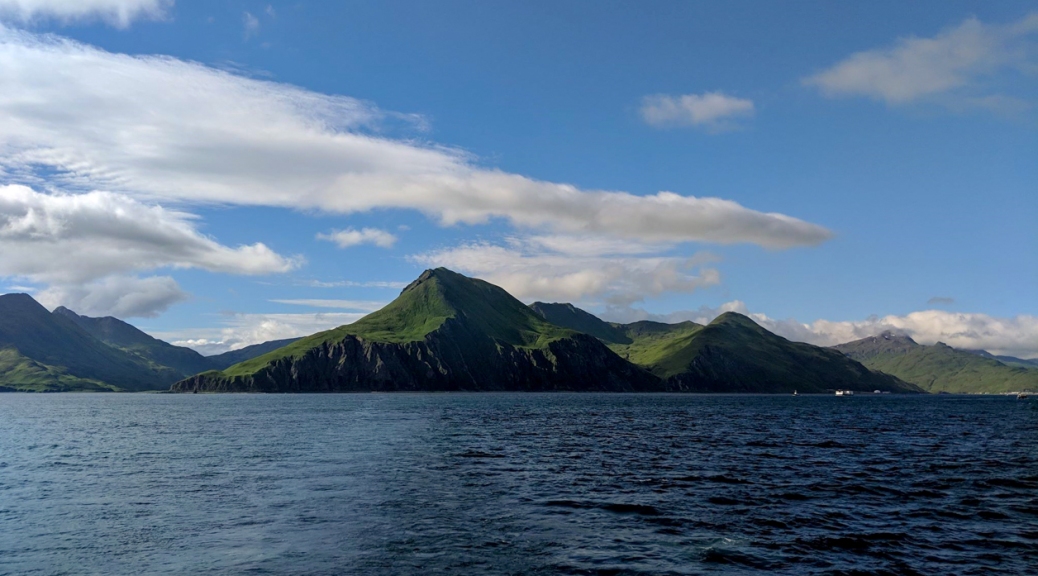By Jay T. Cullen

I am writing this post is to bring the public up to date on monitoring efforts of my research program into the impact of the Fukushima Daiichi Nuclear Power Plant (FDNPP) accident on environmental and public health here in North America. This post is part of an ongoing series summarizing work carried out by the Integrated Fukushima Ocean Radionuclide Monitoring (InFORM) project. Eight years since the peak in releases to the environment our project continues to measure radioisotopes released from the FDNPP that have the potential to present radiological health risks to living things. InFORM makes measurements of levels in seawater and common marine organisms as consumption of seafood is one of the most likely ways that residents of North America could be exposed to Fukushima derived contamination. We have found that:
- Maximum contamination levels in seawater from Fukushima measured in waters offshore (~1500 km) and onshore British Columbia are now known to be about 8 to 10-fold lower than levels present in the North Pacific during the height of atmospheric nuclear weapons testing in the 1950’s and 1960’s. These levels are roughly 1000-fold below the maximum allowable drinking water standards for these isotopes.
- Levels in Pacific salmon returning to North America have not changed in a statistically significant way since before the disaster and are lower than peak levels measured in the 1960’s.
- As was reported in 2015 in this comprehensive study by Health Canada and backed up by measurements made by the international scientific community the release of radioisotopes from Fukushima will have no measurable impact on the health of the marine ecosystem in the northeast Pacific nor on public health in North America.
Eight years after this disaster it is important to remember those lost in the tsunami and those still displaced from their homes and communities struggling to recover.
Offshore and Onshore Citizen Science Monitoring of Seawater Contamination
The levels of radionuclide contamination in seawater is important to understand as the levels that ultimately are found in marine organisms is set by seawater levels. InFORM recently published a peer-reviewed paper in Environmental Science and Technology summarizing our results to date. Offshore levels of Fukushima derived isotopes have peaked and are now decreasing at our westernmost stations 1000-1500 kilometers from the North American coast. The peak levels are well below levels measured in the same waters during the 1950’s and 1960’s when atmospheric nuclear weapons tests were common. Our study area is shown in the figure below along with the prevailing currents that brought the contaminated seawater to North America.
Every month since about December 2014 volunteer citizen scientists in 15 coastal communities up and down the shores of British Columbia have collected seawater samples at the beach and returned them to our laboratories for analysis. The sampling network is shown below.
Since monitoring began coastal seawater concentrations have increased as the Fukushima contamination plume arrives. For the first time we can report that contamination levels have ceased increasing near the coast and are beginning to diminish. The activity of 137Cs leveled off at ~4 Bq per cubic meter of seawater which is about 2-4 times the background from weapons testing that existed here before Fukushima. Both the open ocean and coastal monitoring data are summarized in the figures below.
Offshore levels of 137Cs peaked at a little less than 10 Bq per cubic meter and have been diminishing as less contaminated water moves across the Pacific from the west. Coastal activities have peaked at lower levels likely because freshwater runoff from the continent is less contaminated than the seawater and dilutes the Fukushima contamination.
Monitoring of Pacific Salmon
Since 2014 we have collected and analyzed ~100 Pacific salmon and steel head trout per year returning to rivers up and down the BC coast from the Pacific Ocean. There has been no statistically significant increase in the levels of human-made isotopes in the fish since before the Fukushima disaster. Below we plot the maximum levels we have detected in fish returning to BC from 2011-2017 compared to levels measured in Pacific salmon during the 1960’s when weapons fallout levels were highest surface waters.
On average our Pacific salmon have ~0.2 Bq per kilogram wet weight and it is important to note that there is no statistically significant different in the average contamination level in the fish in years 2011-2017. We are only showing the maximum value detected in each year and have not shown how much variability exists in the yearly data for clarity. Levels of contamination in the 1960’s were >10-fold higher than our average levels in years post-Fukushima. The dose of ionizing radiation experienced by consumers of Pacific fish and shellfish is still dominated by the presence of naturally occurring radioisotopes in the Uranium and Thorium decay series (principally 210-Polonium) and remains well below levels that might represent a health risk.
We will continue our monitoring efforts likely through the end of this calendar year and continue to report our results as they are generated. As always I am happy to answer any questions related to the project and our findings.















 Shea and I tended to the incubations on the helicopter deck for a couple hours this afternoon. I am stoked to be gaining skills in his line of work. The rest of the time, I was running my own samples, or sleeping with one break for dinner (feeling good enough to eat 😊 ).
Shea and I tended to the incubations on the helicopter deck for a couple hours this afternoon. I am stoked to be gaining skills in his line of work. The rest of the time, I was running my own samples, or sleeping with one break for dinner (feeling good enough to eat 😊 ).

